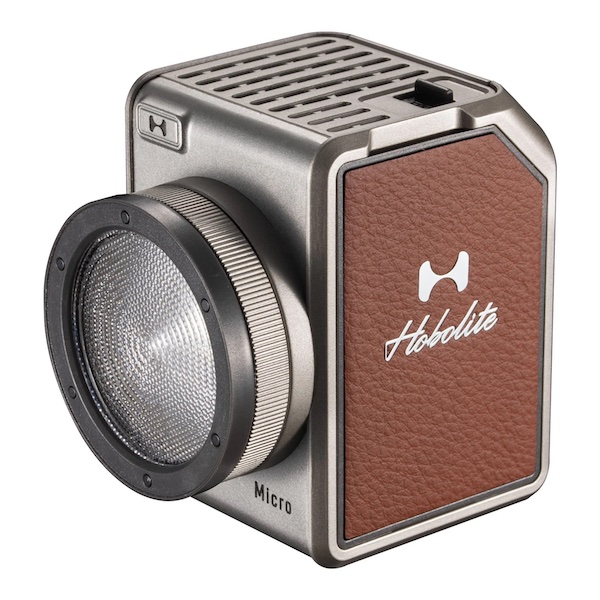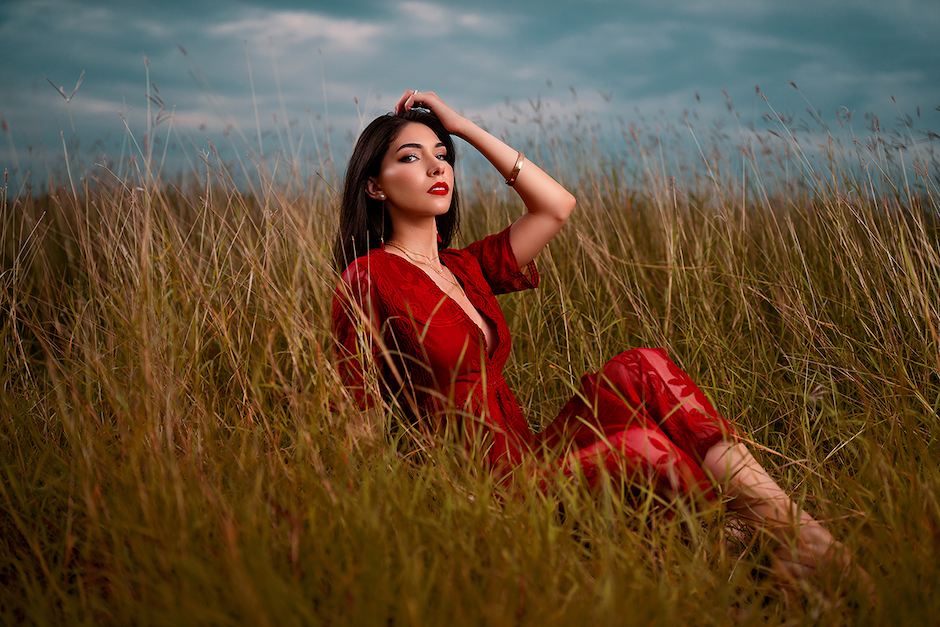Lighting
Beauty Dishes
Beauty dishes typically range in size from 15 to 30 inches in diameter. The interior can be white for a soft light or silver for more contrast.
Why We Love Them: The light quality of a beauty dish is a bit harder than a softbox but softer than reflectors and umbrellas, so it fills a nice sweet spot in your modifier portfolio. It falls off rapidly from your subject and really brings out facial details.
Great For: Accentuating facial angles and delivering contrast in your portrait. Beauty dishes deliver a gentle light spread that wraps around your subject.
Downsides: Difficult to pack down and take on location, and this lighting can be somewhat unforgiving if your subject has a rough complexion.
Softboxes
Where a beauty dish reflects light around your subjects, a softbox will diffuse the light, making it softer and cutting down on hard shadows. Softboxes are sold in a wide range of sizes and shapes—from rectangular to octagonal (often called Octabanks). The larger the box, the more diffuse your light, while the shape helps direct it.
Why We Love Them: Softboxes produce some of the most flattering light, with few harsh shadows. They’re very versatile too; you can use them as fill or key light, and they’re easily modified with honeycomb grids.
Great For: Just about any portrait scenario, and especially useful to soften skin tones.
Downside: Some softboxes can be difficult to set up.
Honeycomb Grids
If you need more directionality to your softbox light, you can attach a honeycomb grid. They deliver a hot spot, or area of stronger light concentration, at the center of your image.
Why We Love Them: They’re inexpensive and fairly easy to add to your softbox. Since you typically layer a grid over diffusion, you won’t get lens flare when the light is coming toward your camera.
Great For: Accentuating details like hair or noses that would otherwise be muted by a softbox’s gentle light spread. Also good for spotlighting areas of your image with a more concentrated light beam.
Downside: Grids can impact color temperature, often making your image a bit warmer than intended.
Cinefoil
Unassuming yet oh-so-important in a pinch, Rosco’s Cinefoil is a heavyweight black foil that can be cut, bent and shaped around most any light source. Cinefoil absorbs light, so it’s perfect for eliminating light leaks and unwanted reflections.
Why We Love It: Cinefoil is the transformer of the modifier world. If you find yourself without a proper snoot or barn door, you can unfurl some Cinefoil and create your own. It’s also great as a flag to
cut down on light hitting your subject.
Great For: Location shooting since you’ll invariably forget something and can turn to Cinefoil in a pinch.
Downside: It’s a consumable item, so you’ll be buying it again and again the more you use it.
Reflectors
Great for bouncing natural and artificial light, reflectors come in a variety of sizes. Larger reflectors will produce a softer, more diffuse light. Smaller reflectors will deliver a more focused beam for sharper shadows and contrast. They’re available with a variety of surfaces: silver for high contrast, white for a more diffuse look, gold for warmer tones and black to absorb light.
Why We Love Them: They’re super easy to transport and set up.
Great For: Environmental portraiture and big spaces.
Downside: Reflectors don’t offer the kind of precision that other modifiers do, so they require a bit more experimentation as you shoot.
Umbrellas
There are two main species of umbrellas: shoot-through and reflective. As the name suggests, a shoot-through umbrella is one where your flash fires through the umbrella. These feature white or semi-transparent material to create a soft, wide light spread. Reflective umbrellas are typically black on the outside and reflective on the inside. Your flash fires into the umbrella and bounces back onto your subject.
Why We Love Them: Umbrellas are easier to set up than softboxes. They’re also inexpensive.
Great For: Portraits on location.
Downsides: Harder to modify and doesn’t offer as much control over light compared to a softbox.
Scrims
A scrim, or large piece of translucent material, can be used to create diffuse light over your subject. Scrims can be as simple as a piece of material you tape to your light source or they can be large and mounted to light stands. The further away the scrim, the softer your light.
Why We Love Them: Like reflectors, scrims are simple to use and easy to set up.
Great For: Diffusing sunlight or window light and for very variable situations where you need to frequently change the hardness or softness of your light.
Downside: Depending on the material, you can inadvertently change the color temperature of your light.
Barn Doors
Like cars, barn doors are sold in two- or four-door varieties. Unlike cars, the four-door variety of barn doors is more desirable as it gives you greater control over your light. They’re best for when you want hard, contrasty lighting but need to narrow its spread. The adjustable doors help you manage your angle and can be fitted to most speed lights and strobes.
Why We Love Them: They offer hard, directional lighting that’s very easy to control. Where grids and snoots tend to deliver just one angle, barn doors are easily adjustable.
Great For: Hair and accent lighting, spotlighting.
Downside: Two- door models offer less control.
Snoots
Think of snoots as the laser pointer of the light modifier world (just not as cat-friendly). They funnel your strobe or speed light’s output very narrowly. When shooting with a snoot, it makes sense to set speed lights to their maximum zoom setting so you’re not wasting light at the edges of your flash.
Why We Love Them: Snoots are simple to use, transport and attach to your flash. They’re also inexpensive relative to other modifiers.
Great For: Spotlighting an area of your image. Also excellent for hair and edge lighting.
Downside: Without diffusion on the front, the light coming from a snoot will be fairly hard.
Modifier Makers
Related: 17 Lights and Modifiers for On Location Shooting
3 Ways To Make Your Subjects Look Larger Than Life














